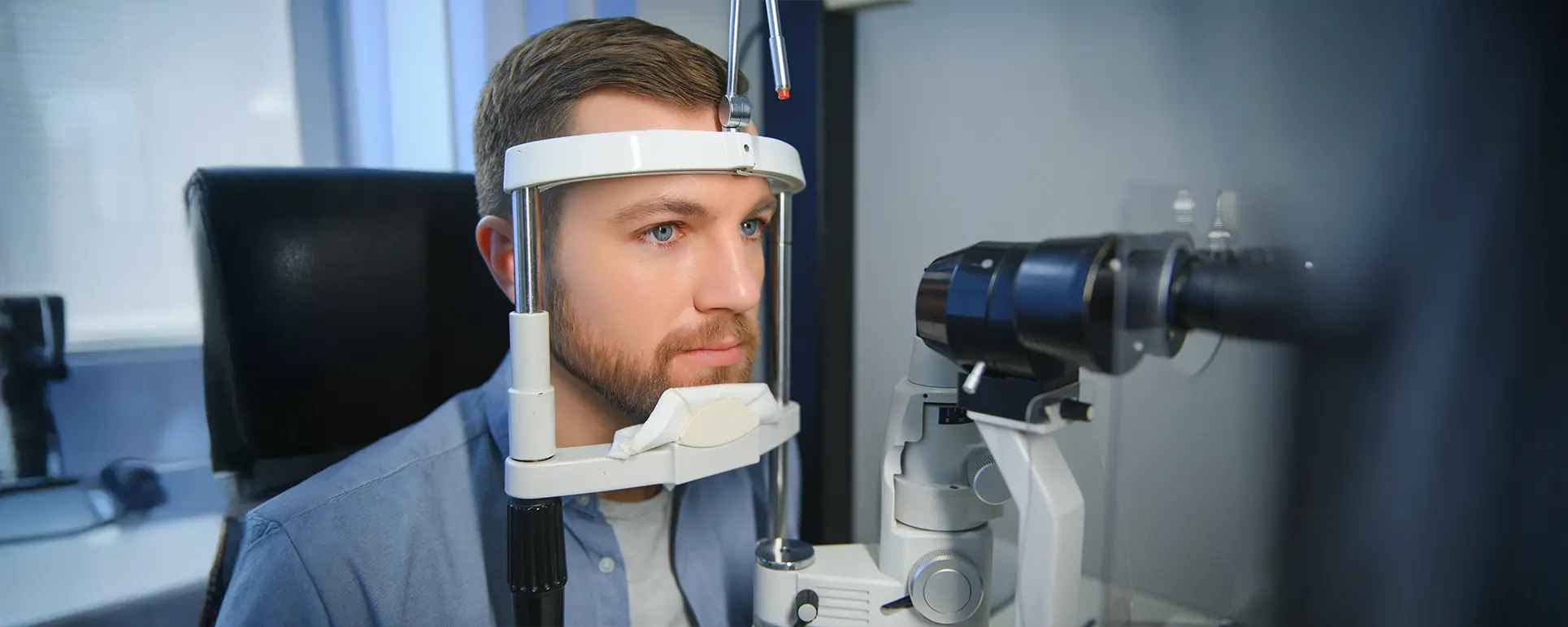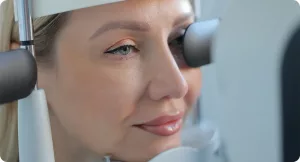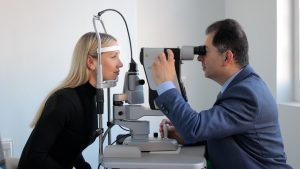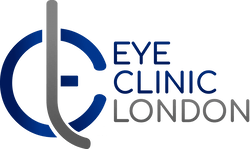How Do You Treat Keratoconus? Current Options Explained

If you’ve been diagnosed with keratoconus, you may already know how frustrating it can be. Your vision gets blurry, glasses stop working properly, and even simple tasks like reading or driving at night can feel more difficult. The good news is that modern medicine now offers effective ways to slow down or even stop keratoconus from getting worse.
In this guide, I’ll take you through the main treatment options available today from specialised contact lenses to corneal cross-linking and surgical procedures. By the end, you’ll have a clear picture of how keratoconus can be managed and what you can expect from treatment.
What Is Keratoconus?
Keratoconus is a progressive eye condition where the normally round cornea (the clear front surface of your eye) thins out and bulges into a cone shape. This irregular shape makes it harder for light to focus properly on the retina, leading to distorted and blurry vision.
The exact cause isn’t fully understood, but it’s linked to genetic factors, eye rubbing, and conditions like allergies or connective tissue disorders. Keratoconus usually starts in the teenage years and can progress into the 30s or 40s before stabilising.
Symptoms of Keratoconus

You might first realise something is off when your glasses or contact lenses no longer give you the sharp, clear vision you’re used to. If you’ve been reaching for your prescription eyewear and still finding that things look a bit blurry or distorted, it could be your eyes trying to tell you something.
Another common sign is that your eyes may become more sensitive to light than usual. You might notice that bright sunlight or indoor lighting feels uncomfortable, or that you squint more often to see clearly. This increased light sensitivity can make everyday activities like driving or working at a computer more challenging.
You might also find it harder to see at night. Streetlights may seem to glare more, or objects may appear fuzzier in dim conditions. This difficulty seeing in low light can sometimes affect your confidence when driving after sunset.
Another clue that something is changing with your eyes is if your glasses prescription seems to be changing frequently. If you find yourself updating your lenses more often than usual, it could indicate that the shape of your cornea is gradually shifting.
Some people also notice seeing “halos” or rings around lights, especially at night. These visual distortions can make driving or using digital devices feel frustrating or even unsafe at times.
Why Early Treatment Matters
Keratoconus is a condition that usually gets worse gradually over time, and that’s why catching it early is so important. The sooner you seek treatment, the better your chances of slowing or even stopping its progression. If you wait too long, the shape of your cornea can change significantly, and it may become too thin for certain treatments to be effective. In some cases, this could mean that surgery ends up being the only option.
By taking action early, you give yourself the best chance of preserving your natural vision. Early treatment can help maintain the clarity you’re used to, reduce your need for more invasive procedures, and make daily activities like reading, driving, or working on a computer much easier and more comfortable.
Getting treatment sooner also gives you more options. Non-surgical interventions, such as specialised contact lenses or corneal cross-linking, can be far more effective when your keratoconus is still in its early stages. These treatments can help stabilise your cornea, improve your vision, and prevent further deterioration.
Ultimately, addressing keratoconus early isn’t just about your eyesight it’s about your overall quality of life. You can continue enjoying the activities you love without constant frustration or worry about worsening vision. So if you’ve noticed any signs of keratoconus, don’t wait seeing an eye specialist promptly can make a real difference in keeping your eyes healthy and your vision clear.
Treatment Options for Keratoconus

The right treatment for you depends on how advanced your keratoconus is. Let’s break down the main options available today.
1. Specialised Contact Lenses
In the early stages of keratoconus, your regular glasses may still help you see clearly. However, as the condition progresses, you’ll often find that contact lenses offer sharper and more reliable vision. There are several types to consider, each suited to different levels of keratoconus.
Rigid Gas Permeable (RGP) lenses are small, firm lenses that sit directly on your cornea. They work by creating a smooth surface over your irregular corneal shape, which can give you much clearer vision. While these lenses can take some time to get used to, many people find the improvement in clarity well worth the adjustment period.
For more advanced keratoconus, scleral lenses are often a preferred choice. These lenses are larger and rest on the white part of your eye, known as the sclera. They vault over the cornea, with the space in between filled with fluid, creating a comfortable cushion. This design makes them highly effective for maintaining clear vision and comfort, even in more severe cases.
Another option is hybrid lenses, which combine a rigid central zone with a soft outer ring. This allows you to enjoy the sharp vision of a hard lens while benefiting from the comfort of a soft lens. If you still find comfort a concern, piggyback lenses may be suitable. These involve wearing a soft lens underneath a hard lens, providing extra cushioning and making them easier to wear throughout the day.
It’s important to remember that while specialised contact lenses can significantly improve your day-to-day vision, they don’t stop keratoconus from progressing. Still, they can make a huge difference in your ability to see clearly and comfortably, helping you maintain your quality of life while you explore other treatments or interventions.
2. Corneal Cross-Linking (CXL)
Corneal cross-linking is the only treatment that can stop keratoconus from worsening.
How It Works
- Vitamin B2 drops (riboflavin) are applied to the cornea.
- The cornea is then exposed to a special UV light.
- This strengthens the collagen fibres in the cornea, preventing further bulging.
Benefits
- Can halt progression in over 90% of cases.
- May improve corneal shape slightly.
- Quick recovery and long-lasting results.
CXL is most effective in early-to-moderate keratoconus, so early diagnosis is key.
3. Intrastromal Corneal Ring Segments (ICRS)
For patients who are not suitable for lenses alone, ICRS can help.
What They Are
- Small, crescent-shaped implants inserted into the cornea.
- Flatten and reshape the cornea to improve vision.
Benefits
- Can reduce irregularity.
- May make contact lens wear easier.
- Minimally invasive compared to corneal transplants.
ICRS are often combined with cross-linking for better outcomes.
4. Topography-Guided Laser Treatments
Laser treatments, such as topography-guided PRK (photorefractive keratectomy), can smooth out the cornea’s irregular surface.
How It Helps
- Reduces irregular astigmatism.
- Improves visual quality.
- Usually performed with cross-linking to stabilise results.
This option is suitable for selected cases with sufficient corneal thickness.
5. Corneal Transplant (Keratoplasty)
In advanced keratoconus, where the cornea is too thin or scarred, a corneal transplant may be necessary.
Types of Transplant
- Deep Anterior Lamellar Keratoplasty (DALK): Replaces the front corneal layers while preserving the endothelium.
- Penetrating Keratoplasty (PK): Full-thickness corneal transplant.
Benefits
- Can restore clear vision in severe cases.
- Success rates are high with modern techniques.
Recovery takes longer, and patients may still need glasses or lenses afterward, but outcomes are often life-changing.
Lifestyle and Home Care Tips
Alongside your medical treatment, there are some simple habits you can adopt at home to help protect your vision and support your eyes. One of the most important things is to avoid rubbing your eyes. It might feel natural when they’re itchy or tired, but rubbing can actually worsen keratoconus by putting extra pressure on your cornea.
If you have allergies, managing them effectively can make a big difference too. Reducing eye irritation with allergy treatments or keeping your environment dust-free can help you resist the urge to rub your eyes. Wearing sunglasses with UV protection whenever you’re outdoors is another simple but powerful step. This protects your cornea from harmful ultraviolet rays and supports overall eye health.
Finally, sticking to your follow-up appointments with your eye specialist is crucial. Regular monitoring allows your doctor to track any changes in your cornea, adjust your treatment if needed, and catch any issues early.
By making these small but consistent changes in your daily routine, you can help protect your vision, complement your treatment, and maintain better eye health over time.
What Results Can You Expect?
With the treatments available today, most people with keratoconus can maintain good, functional vision and continue with their daily activities. If your keratoconus is still in the early stages, specialised contact lenses often provide excellent clarity, allowing you to see sharply without the need for surgery.
For cases that are progressing, corneal cross-linking can be highly effective in stopping the condition from worsening. This means you can preserve your natural vision and reduce the likelihood of needing more invasive interventions later on.
In advanced cases, where other treatments are no longer sufficient, corneal transplants can restore sight and dramatically improve vision. While surgery is usually considered a last resort, it can be life-changing for those with severe keratoconus.
The most important factors in achieving the best outcomes are early diagnosis and a treatment plan tailored to your specific needs. By recognising the signs early and working closely with your eye specialist, you can take control of your keratoconus and protect your vision for the long term.
Emotional Impact of Keratoconus
It’s completely natural to feel anxious or overwhelmed when you learn that your vision is changing. You might worry about how keratoconus could affect your independence, your job, or even simple daily activities like driving. These concerns are normal, and acknowledging them is an important part of taking care of yourself.
The good news is that modern treatments have made severe vision loss from keratoconus extremely rare. With early detection and the right interventions, most people are able to maintain good functional vision and continue living active, fulfilling lives.
Even so, the emotional side of keratoconus shouldn’t be ignored. Support groups, counselling, or simply talking openly with your eye specialist can help you manage the stress and uncertainty that sometimes comes with the condition. By seeking both medical and emotional support, you can feel more confident and empowered in managing your keratoconus day-to-day.
Choosing the Right Specialist
Not every clinic offers the full range of keratoconus treatments, so it’s important to choose carefully. A clinic that specialises in advanced eye care can offer:
- Comprehensive diagnostic imaging.
- Access to corneal cross-linking.
- Expertise in lens fitting.
- Surgical options if needed.
If you’re exploring keratoconus treatment in London, choosing an experienced clinic ensures you get the best possible care tailored to your stage of keratoconus.
FAQs:
- Can keratoconus be cured completely?
Currently, keratoconus cannot be completely “cured” in the sense of returning the cornea to a naturally perfect shape. However, modern treatments can slow or stop its progression and significantly improve vision. Corneal cross-linking (CXL) is the only procedure that can halt the worsening of keratoconus, while specialised lenses and surgeries can restore clear vision. - How do I know if my keratoconus is getting worse?
Progression is often detected through regular eye exams and corneal imaging. Signs that keratoconus may be worsening include more frequent changes in your glasses prescription, increasing blur or distortion, difficulty seeing at night, and worsening sensitivity to light. Early detection is key for effective treatment. - Are specialised contact lenses uncomfortable to wear?
Rigid Gas Permeable (RGP) lenses can feel unusual at first, but most people adapt within a few days to weeks. Scleral lenses, which vault over the cornea, are generally more comfortable, especially for advanced keratoconus. Hybrid and piggyback lenses combine comfort with visual clarity. A specialist fitting is essential for comfort and effectiveness. - What is corneal cross-linking, and how effective is it?
Corneal cross-linking uses riboflavin (vitamin B2) drops and ultraviolet light to strengthen corneal collagen fibres. This stabilises the cornea and prevents further bulging. Studies show that CXL halts keratoconus progression in over 90% of patients and can slightly improve corneal shape. Recovery is usually quick, and results are long-lasting. - When are corneal ring implants recommended?
Intrastromal corneal ring segments (ICRS) are recommended for patients whose corneas are too irregular for contact lenses alone but who do not yet need a transplant. They flatten and reshape the cornea, improving vision and sometimes making contact lens wear easier. They are often combined with cross-linking for better results. - Can laser treatment fix keratoconus?
Topography-guided laser treatments, such as PRK, can smooth the cornea’s surface and reduce irregular astigmatism. They are usually combined with corneal cross-linking to stabilise the results. However, laser treatments are only suitable for selected patients with sufficient corneal thickness and should be evaluated by a specialist. - When is a corneal transplant necessary?
A corneal transplant is typically considered in advanced keratoconus when the cornea is too thin, scarred, or irregular for lenses or other treatments. There are two main types: Deep Anterior Lamellar Keratoplasty (DALK), which replaces the front layers while preserving the endothelium, and Penetrating Keratoplasty (PK), a full-thickness transplant. Success rates are high with modern techniques. - Can lifestyle changes help manage keratoconus?
Yes, simple habits can support treatment and slow progression. Avoid rubbing your eyes, manage allergies to reduce irritation, wear UV-protective sunglasses, and keep regular follow-up appointments. While these steps won’t reverse keratoconus, they help protect your cornea and optimise treatment outcomes. - Is keratoconus hereditary?
Genetics can play a role in keratoconus, though it isn’t fully understood. If a family member has keratoconus, your risk may be higher, so regular eye exams are important. Environmental factors, such as eye rubbing and chronic allergies, can also contribute to its development. - How often should keratoconus patients have eye check-ups?
The frequency of check-ups depends on your stage of keratoconus and the treatment you’re undergoing. Early or progressive cases may require visits every 6–12 months for corneal imaging and vision monitoring. After corneal cross-linking or surgery, follow-ups are typically more frequent initially, then spaced out once stability is confirmed.
Final Thoughts: Managing Keratoconus in the Modern Era
Living with keratoconus can feel overwhelming, but the good news is that there are treatments that can help protect and even improve your vision. From specialised contact lenses to corneal cross-linking and surgical options, the best approach depends on your eyes, how your keratoconus is progressing, and what works for your lifestyle.
If you want to explore the options that might be right for you, you can contact us at Eye Clinic London to discuss keratoconus treatment in London. We can assess your eyes, explain the treatments in detail, and help you take the steps that make the most sense for your vision and daily life.
References:
- Deshmukh, R. (2023). ‘Management of keratoconus: an updated review’. National Center for Biotechnology Information. Available at: https://pmc.ncbi.nlm.nih.gov/articles/PMC10318194/
- Vohra, V. (2023). ‘Collagen Cross Linking for Keratoconus’. StatPearls. Available at: https://www.ncbi.nlm.nih.gov/books/NBK562271/
- Santodomingo-Rubido, J. (2022). ‘Keratoconus: An updated review’. PubMed. Available at: https://pubmed.ncbi.nlm.nih.gov/34991971/
- Angelo, L. (2022). ‘Review Article Corneal Crosslinking: Present and Future’. ScienceDirect. Available at: https://www.sciencedirect.com/science/article/pii/S2162098923007399
- Rafizadeh, S.M. (2025). ‘Keratoconus and quality of life: an updated comprehensive review’. BMC Ophthalmology. Available at: https://bmcophthalmol.biomedcentral.com/articles/10.1186/s12886-025-04320-4

